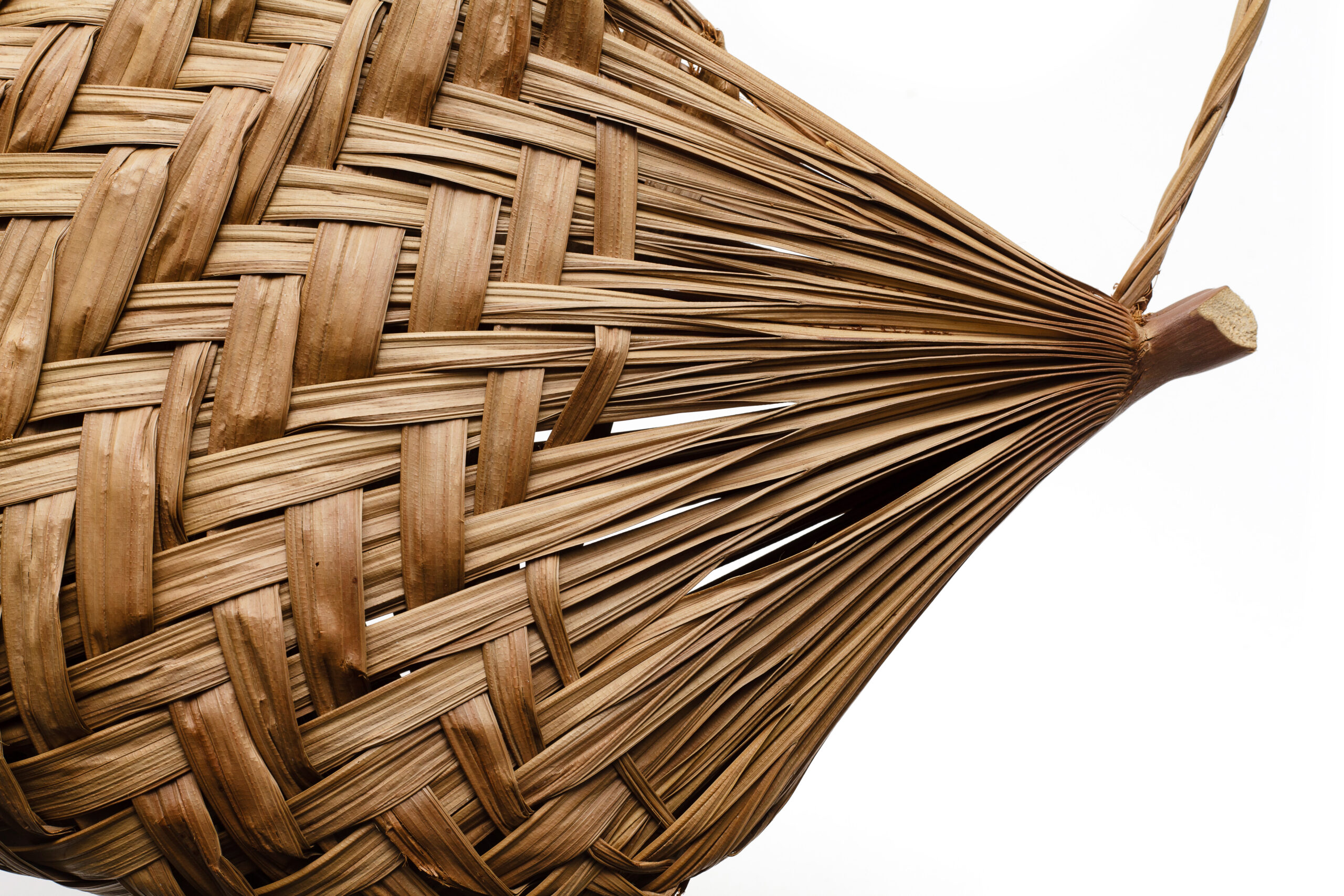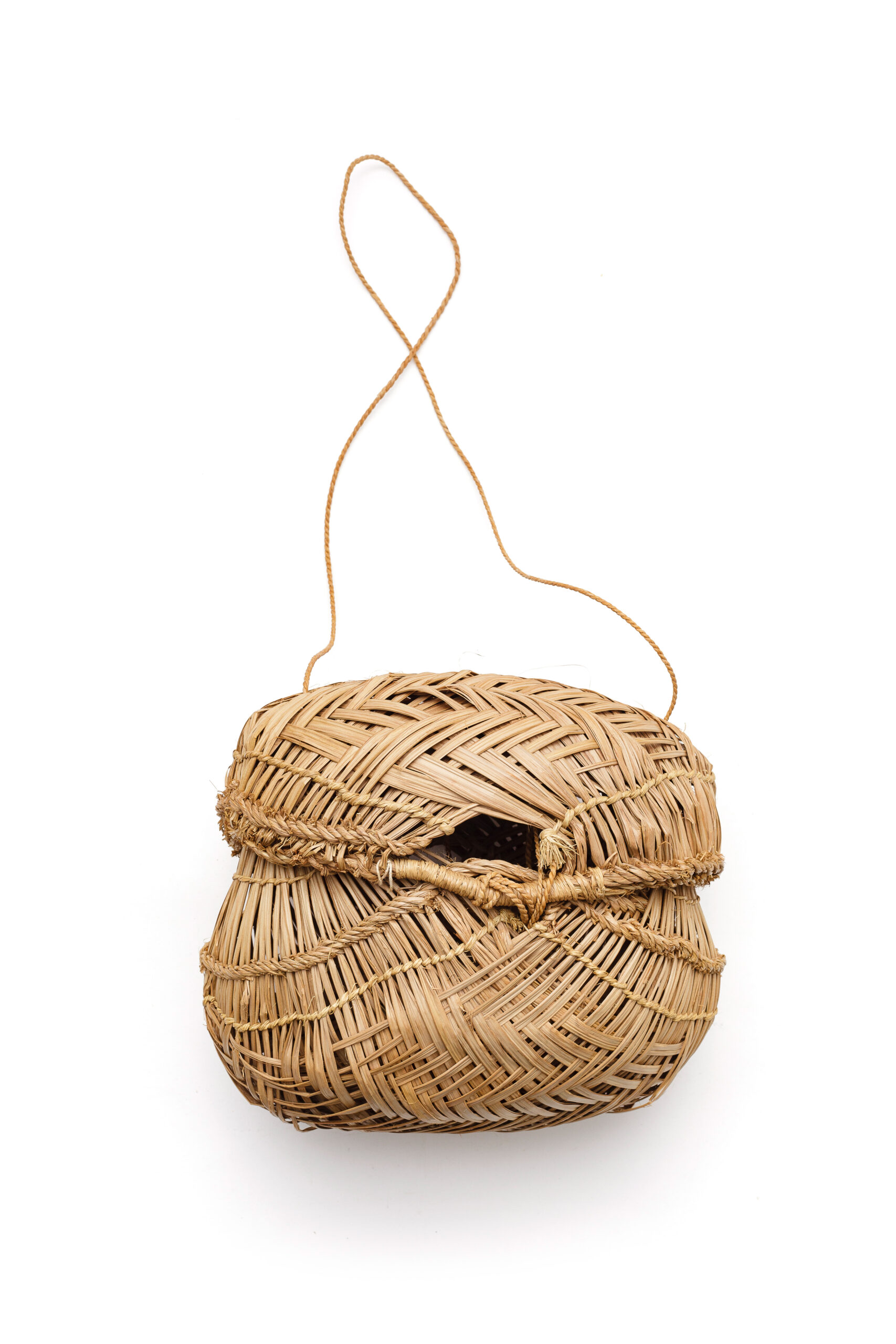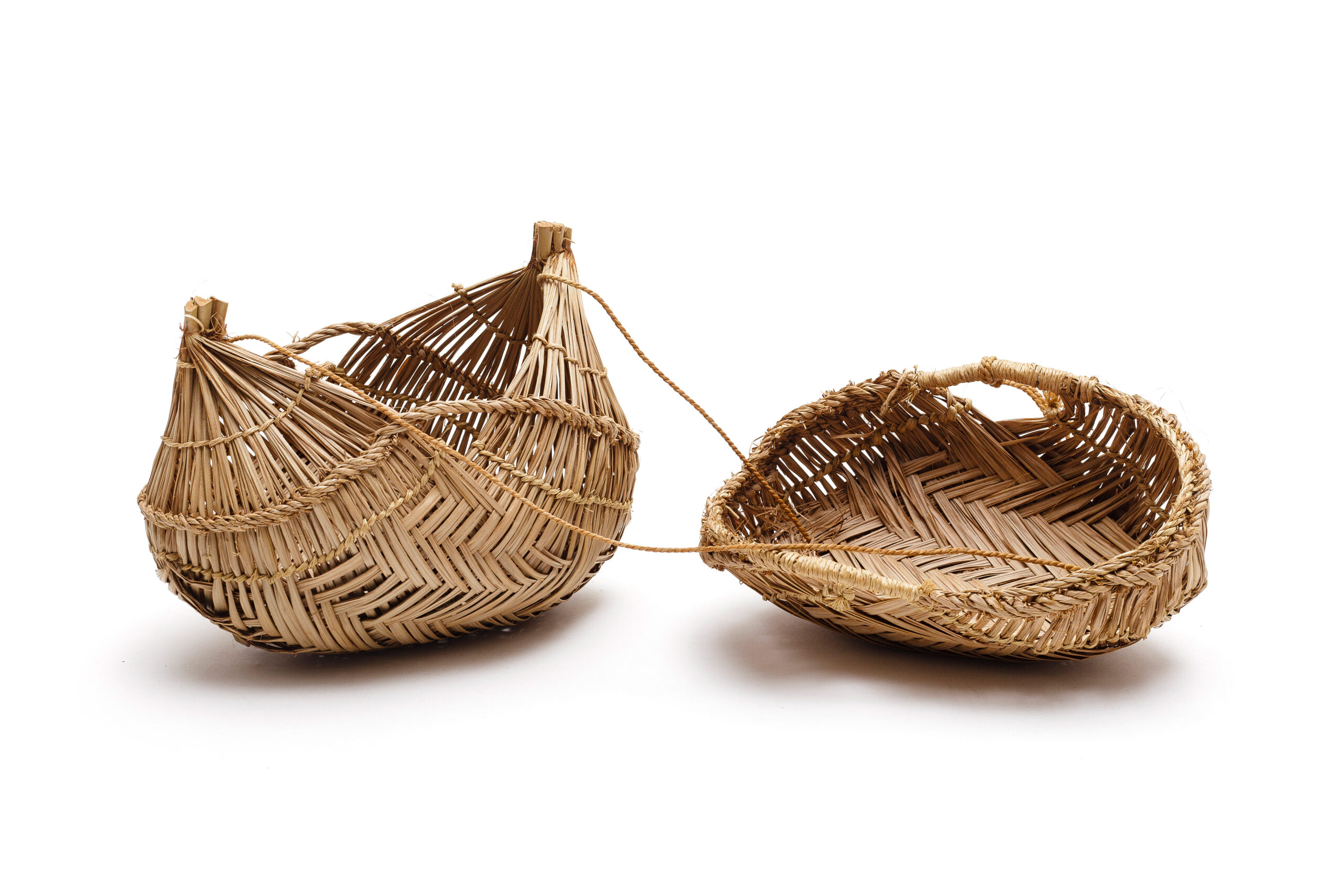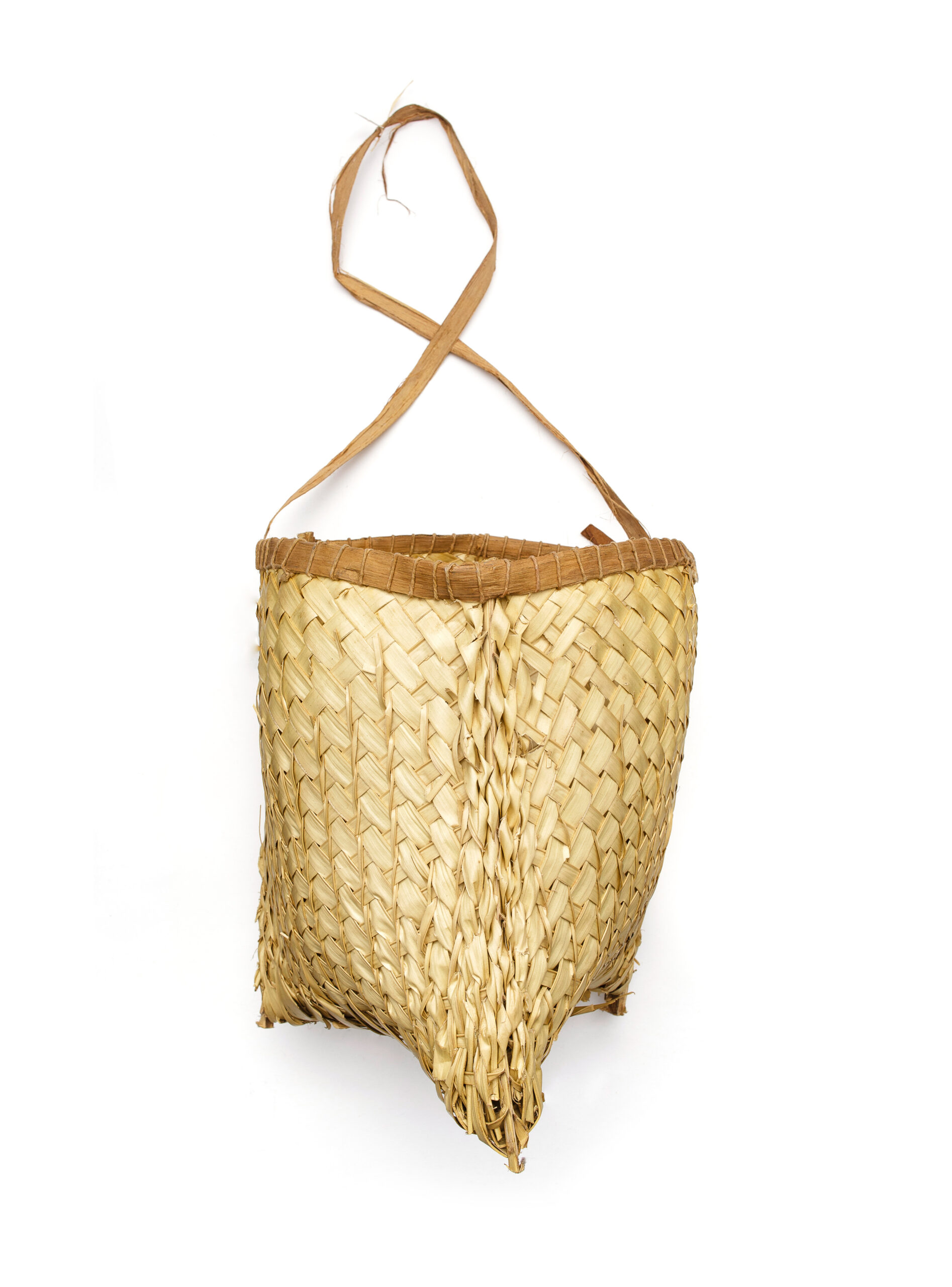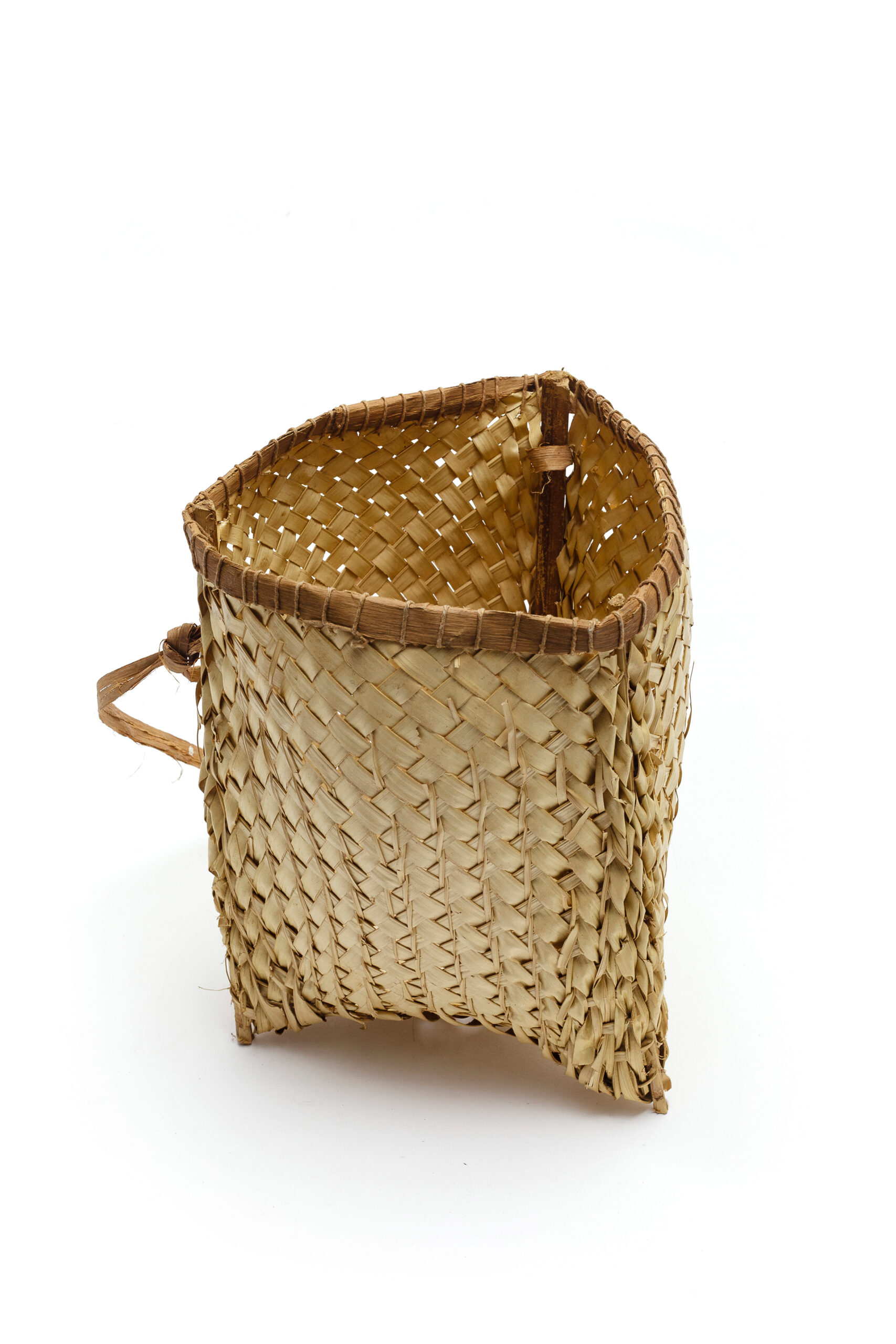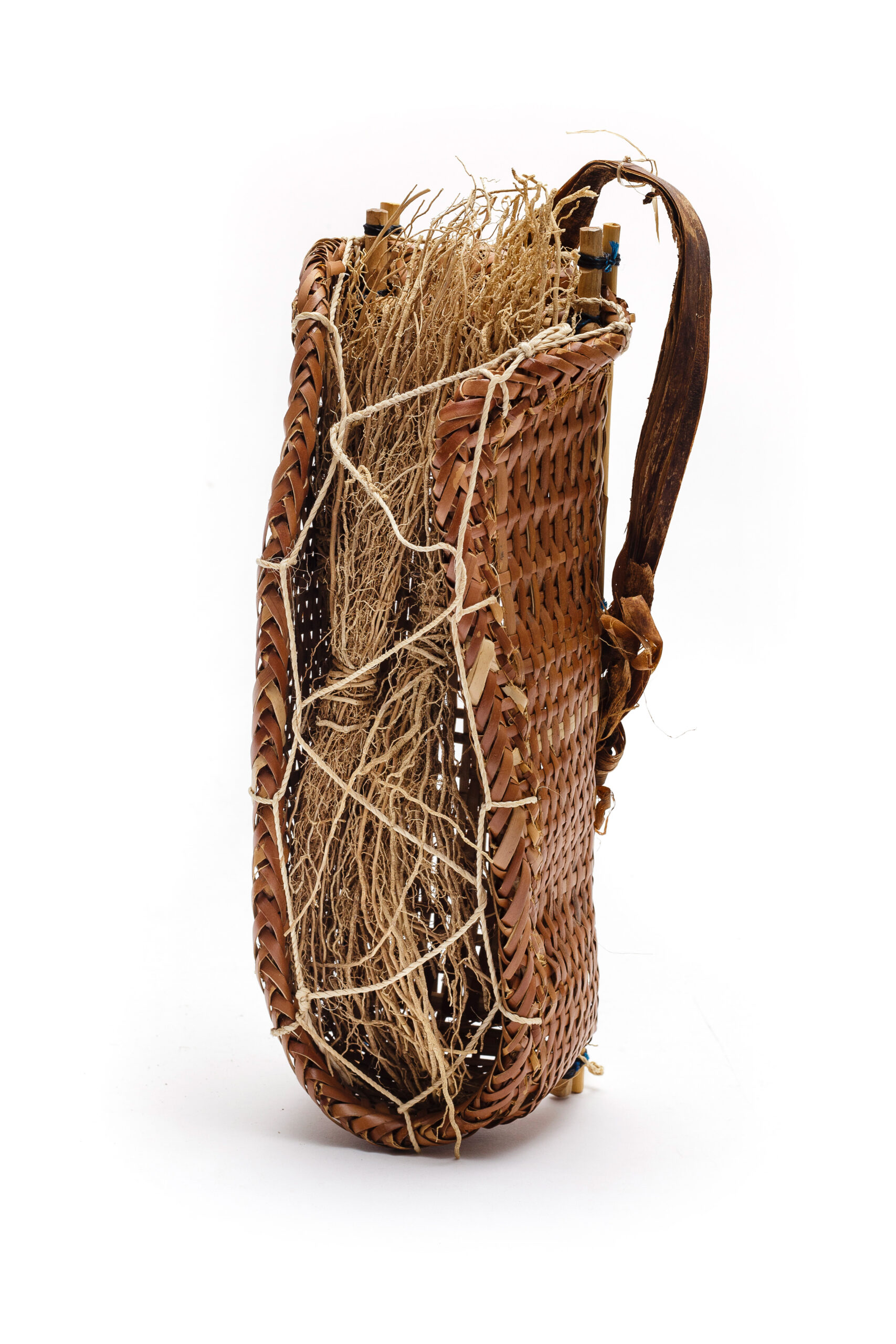MATERIALS: Palm tree leaves (Arumã, Buriti, Açaí) or vines (Titica or Ambé).
TECHNIQUE: Woven by hand while the leaves are still green. The resistance of the piece comes with the aging of the material.
USE: As containers. Often produced in the forest to be used instantly to transport things, from products of the forest up to children.
Natural Bags
-
NATURAL BAGS
These are different models of bags or backpacks created by weaving together leaves or vines, often produced in the forest to be used instantly to carry things. A peculiarity observed in the Amazon is the way people carry these volumes: they rest their strap across their forehead.
Some are manufactured through a simple but ingenious use of leaves of different palm trees – such as Arumã, Buriti, Açaí, amongst others: by taking advantage of the strength and shape of the material.
The most robust vessels are made by weaving vines, such as Cipó Titica or Ambé. These vessels have a rigid and thin material, with its weave tightly knit, resulting in a very resistant piece. This kind of backpack can bear a lot of weight, and is commonly used to carry children or to transport products from the forest.
-
-
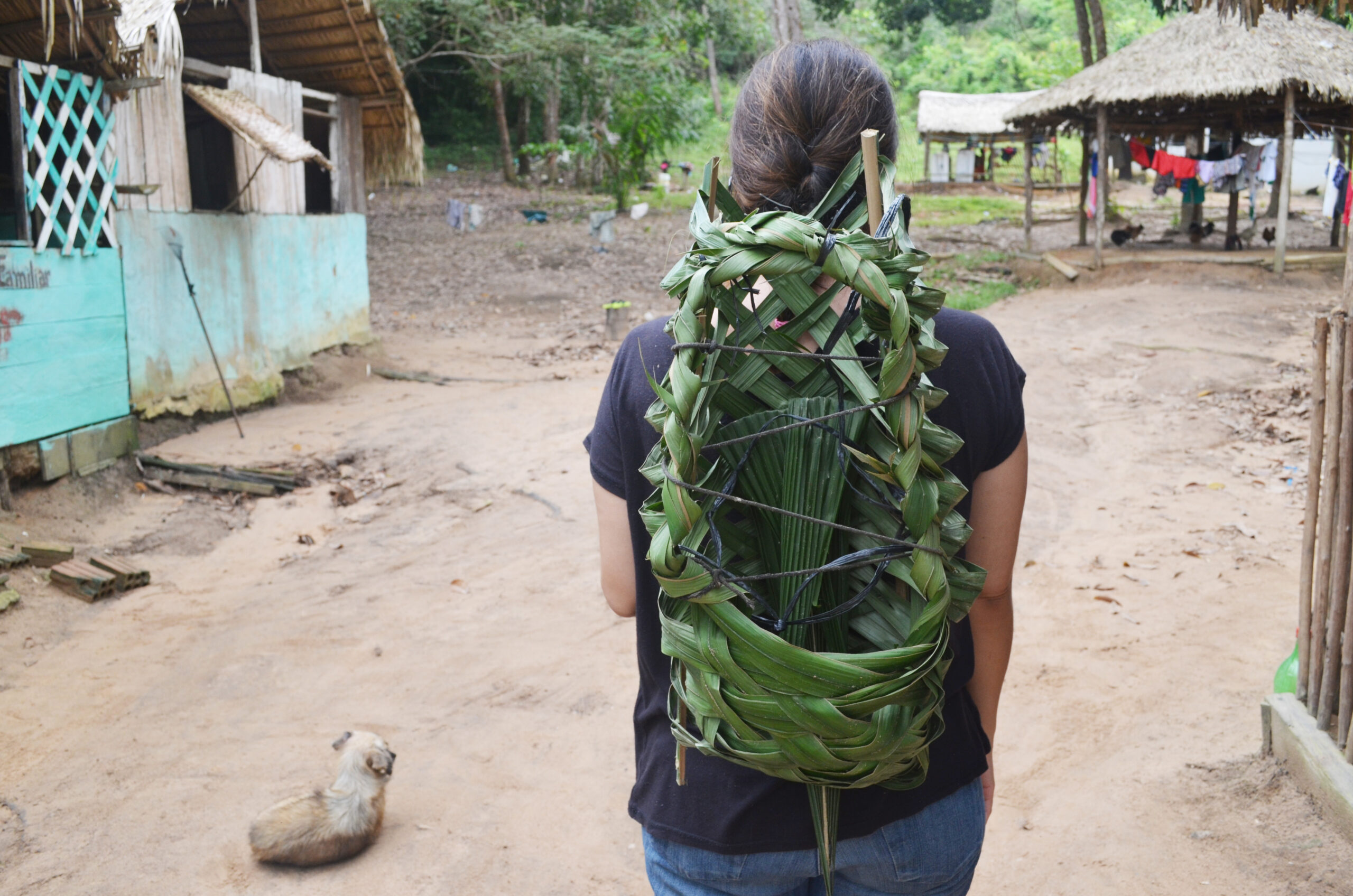
Panacu bags must be woven while the leaves are still green. The resistance of the piece comes with the aging of the material.
-

Panacu bags are a kind of “basket”, besides serving to transport belongings these objects are also used as containers, for example as waste bins.
-

A different type of panacu.
-
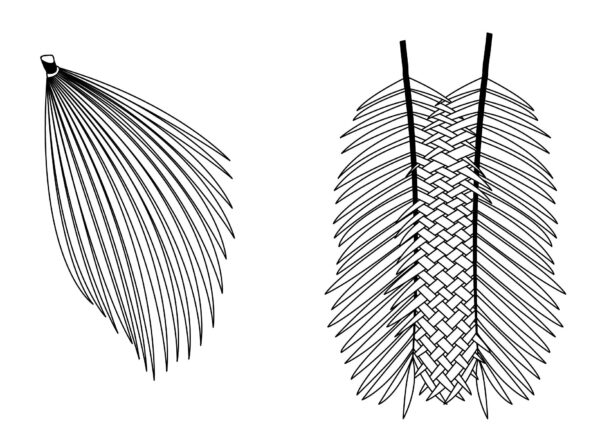
Making panacu bags: the craft technique uses the most rigid part of the palm tree leaf as a structure for the bags, and the most flexible part to be woven in different ways.
-

A Jamaxim bag.
-
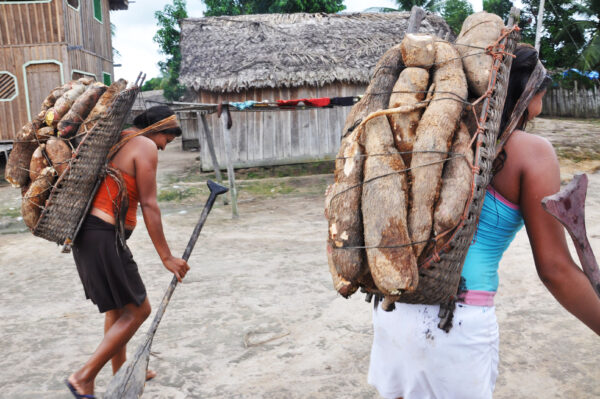
The Jamaxim bag being used to carry heavy cassava roots.
-
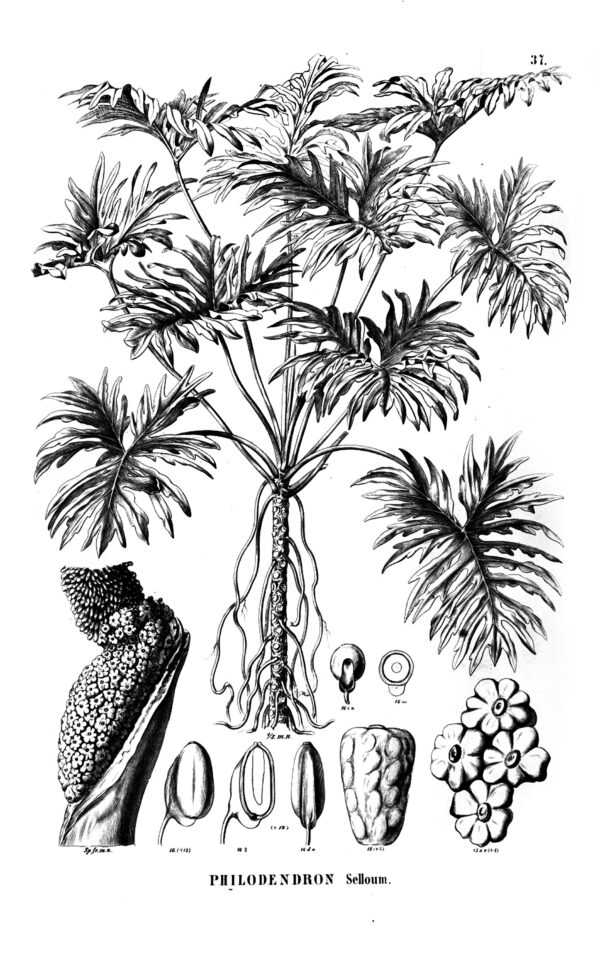
The aerial roots are the parts of the Cipó Ambé used to make the jamaxim.
-
Video: trail guide Edinelson (from the Jamaraquá Community) demonstrates the use of bags found in the forest.
-
-
3D

